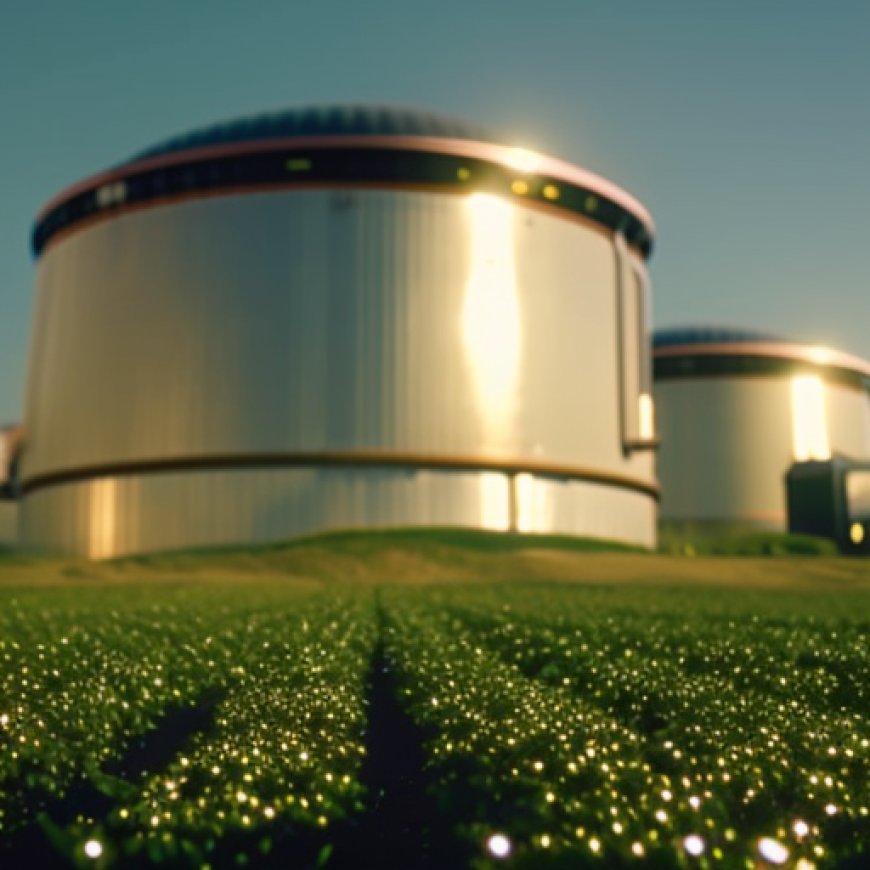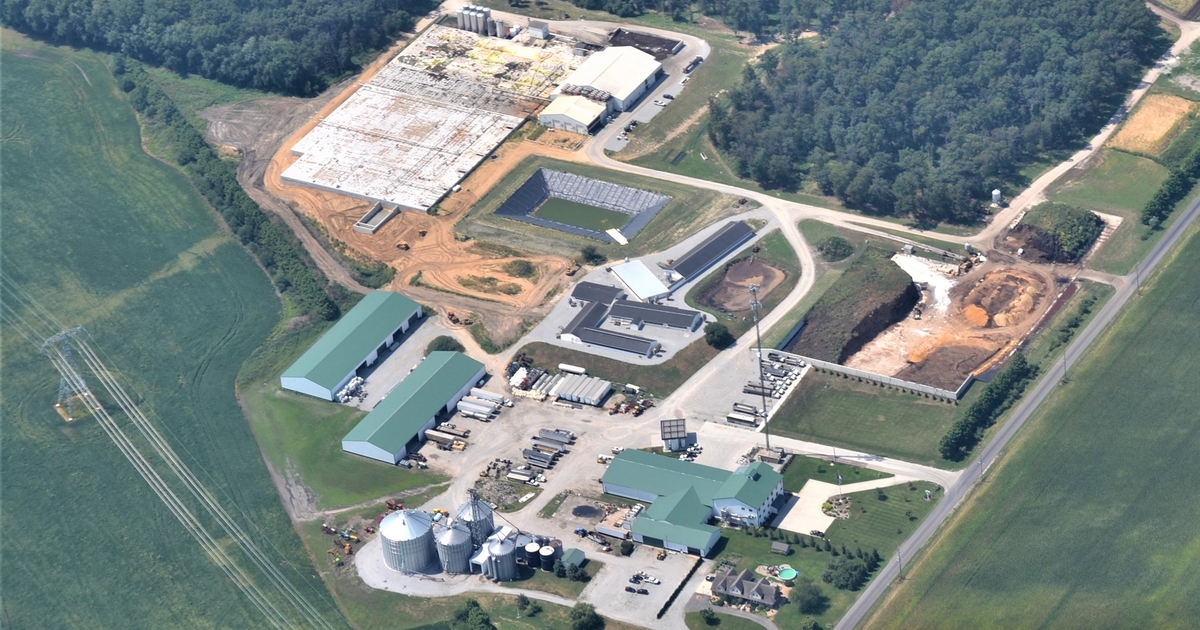Anaerobic digester projects win Energy Vision Leadership Award
Anaerobic digester projects win Energy Vision Leadership Award ... National Hog Farmer



Renewable Energy Projects Recognized for Sustainable Development Goals
Introduction
At its 17th annual Leadership Awards event in Manhattan, the NGO Energy Vision recognized three renewable energy projects in the United States that reduce greenhouse gas emissions by converting organic wastes into clean, sustainable energy. This year’s winners are all anaerobic digester projects that process food and agricultural waste: BioTown Biogas, Dickinson College Farm, and EMG International’s project for the beverage manufacturer American Fruits & Flavors.
BioTown Biogas
BioTown Biogas, a partnership with Green Rock Energy Partners, expanded the existing anaerobic digester facility on BioTown Ag’s Reynolds, Indiana farm into one of the largest on-farm digester operations in the world. This expansion allows them to process food waste, manure, and other agricultural waste from around the region, producing an estimated 42 million kilowatt-hours of renewable power plus more than 3 million diesel-equivalent gallons of renewable natural gas (RNG) fuel each year. The power generated at BTB is enough to supply energy for approximately 4,500 to 5,000 households within the vicinity.
Dickinson College Farm
Dickinson College Farm is building one of the smallest anaerobic digesters as a hands-on learning resource for Dickinson students and a replicable model for other small farms nationwide. The digester processes waste from a neighboring farm’s dairy cows, food waste from the college’s dining hall and local businesses, and spent grain from a local brewery. This eliminates farm runoff, avoids methane emissions, harnesses the biogas, and generates renewable electricity to power the college farm and sell back to the grid.
EMG International
EMG International partnered with American Fruits & Flavors to install EMG’s PurEffluent system at AFF’s beverage factory in San Fernando, California. The system treats high-strength wastewater by removing organics from the waste stream and using them to generate biogas for renewable energy. This project reduces strain on the local municipal wastewater treatment plant and significantly reduces sewer surcharges.
Sustainable Development Goals
These renewable energy projects align with the Sustainable Development Goals (SDGs) set by the United Nations. By converting organic waste into clean energy, they contribute to Goal 7: Affordable and Clean Energy. Additionally, they address Goal 13: Climate Action by reducing greenhouse gas emissions and mitigating climate change. Furthermore, these projects promote Goal 12: Responsible Consumption and Production by repurposing agricultural waste and reducing waste sent to landfills. They also support Goal 15: Life on Land by protecting the environment and restoring soils through sustainable practices.
Energy Vision President Matt Tomich emphasizes the potential for anaerobic digestion technology, stating that “thousands of facilities could use this technology.” Energy Vision’s founder and Senior Advisor Joanna Underwood highlights the global impact of anaerobic digesters, stating that “every country in the world needs lower methane emissions, clean fuel, and a way to restore soils.”
These renewable energy projects serve as exemplary models for achieving the Sustainable Development Goals and demonstrate the importance of transitioning to sustainable and clean energy sources.
SDGs, Targets, and Indicators
1. Which SDGs are addressed or connected to the issues highlighted in the article?
- SDG 7: Affordable and Clean Energy
- SDG 9: Industry, Innovation, and Infrastructure
- SDG 12: Responsible Consumption and Production
- SDG 13: Climate Action
- SDG 15: Life on Land
2. What specific targets under those SDGs can be identified based on the article’s content?
- SDG 7.2: Increase substantially the share of renewable energy in the global energy mix.
- SDG 9.4: Upgrade infrastructure and retrofit industries to make them sustainable, with increased resource-use efficiency and greater adoption of clean and environmentally sound technologies and industrial processes.
- SDG 12.4: By 2020, achieve the environmentally sound management of chemicals and all wastes throughout their life cycle, in accordance with agreed international frameworks, and significantly reduce their release to air, water, and soil to minimize their adverse impacts on human health and the environment.
- SDG 13.2: Integrate climate change measures into national policies, strategies, and planning.
- SDG 15.3: By 2030, combat desertification, restore degraded land and soil, including land affected by desertification, drought, and floods, and strive to achieve a land degradation-neutral world.
3. Are there any indicators mentioned or implied in the article that can be used to measure progress towards the identified targets?
- Amount of greenhouse gas emissions reduced through the conversion of organic wastes into clean, sustainable energy.
- Amount of renewable power and renewable natural gas (RNG) fuel produced from anaerobic digester operations.
- Number of households supplied with energy from renewable sources.
- Amount of waste processed and converted into biogas for renewable energy generation.
- Reduction in strain on local municipal wastewater treatment plants.
Table: SDGs, Targets, and Indicators
| SDGs | Targets | Indicators |
|---|---|---|
| SDG 7: Affordable and Clean Energy | 7.2: Increase substantially the share of renewable energy in the global energy mix. | – Amount of renewable power and renewable natural gas (RNG) fuel produced from anaerobic digester operations. – Number of households supplied with energy from renewable sources. |
| SDG 9: Industry, Innovation, and Infrastructure | 9.4: Upgrade infrastructure and retrofit industries to make them sustainable, with increased resource-use efficiency and greater adoption of clean and environmentally sound technologies and industrial processes. | – Amount of greenhouse gas emissions reduced through the conversion of organic wastes into clean, sustainable energy. |
| SDG 12: Responsible Consumption and Production | 12.4: By 2020, achieve the environmentally sound management of chemicals and all wastes throughout their life cycle, in accordance with agreed international frameworks, and significantly reduce their release to air, water, and soil to minimize their adverse impacts on human health and the environment. | – Amount of waste processed and converted into biogas for renewable energy generation. |
| SDG 13: Climate Action | 13.2: Integrate climate change measures into national policies, strategies, and planning. | – Amount of greenhouse gas emissions reduced through the conversion of organic wastes into clean, sustainable energy. |
| SDG 15: Life on Land | 15.3: By 2030, combat desertification, restore degraded land and soil, including land affected by desertification, drought, and floods, and strive to achieve a land degradation-neutral world. | – Reduction in strain on local municipal wastewater treatment plants. |
Behold! This splendid article springs forth from the wellspring of knowledge, shaped by a wondrous proprietary AI technology that delved into a vast ocean of data, illuminating the path towards the Sustainable Development Goals. Remember that all rights are reserved by SDG Investors LLC, empowering us to champion progress together.
Source: nationalhogfarmer.com

Join us, as fellow seekers of change, on a transformative journey at https://sdgtalks.ai/welcome, where you can become a member and actively contribute to shaping a brighter future.







